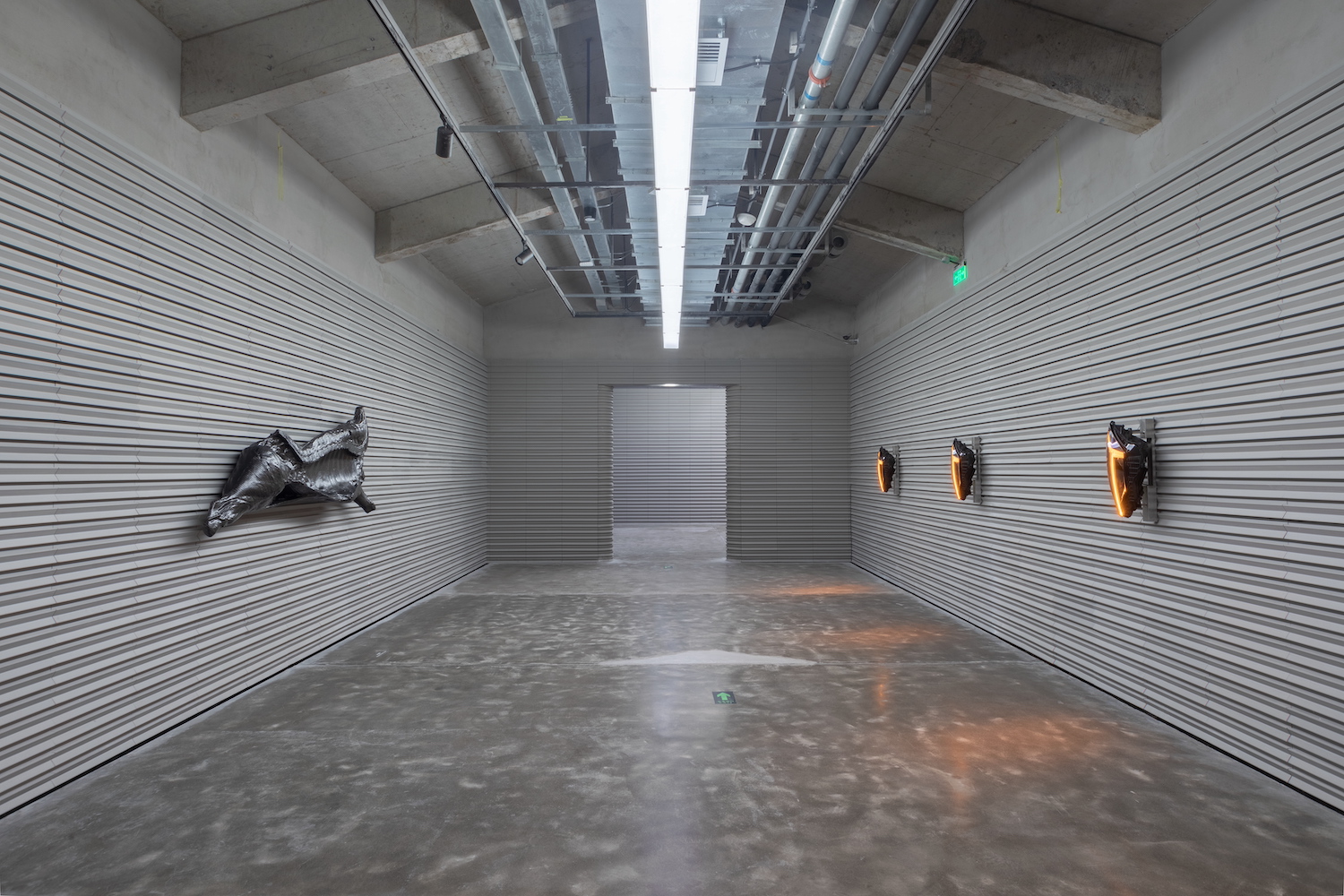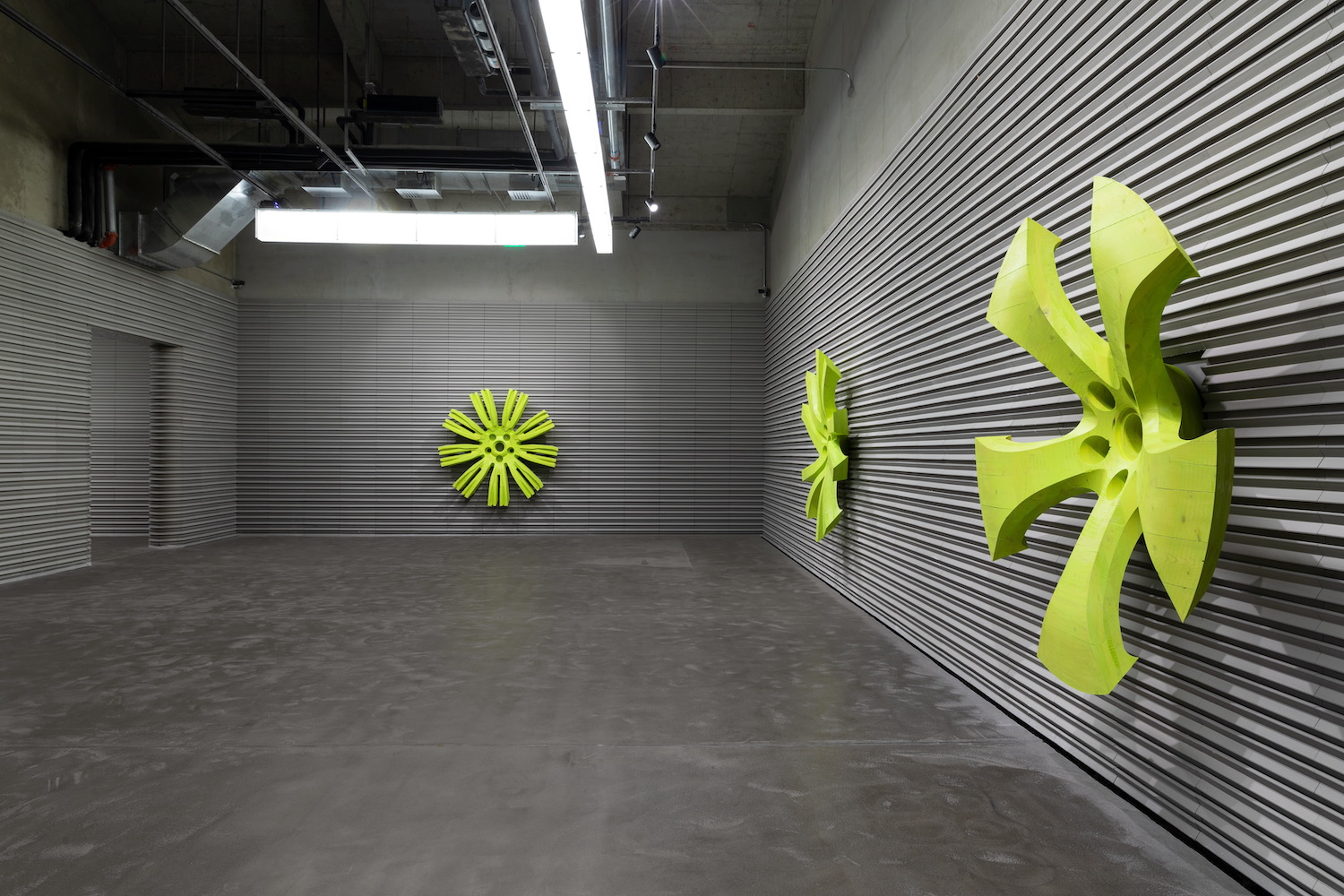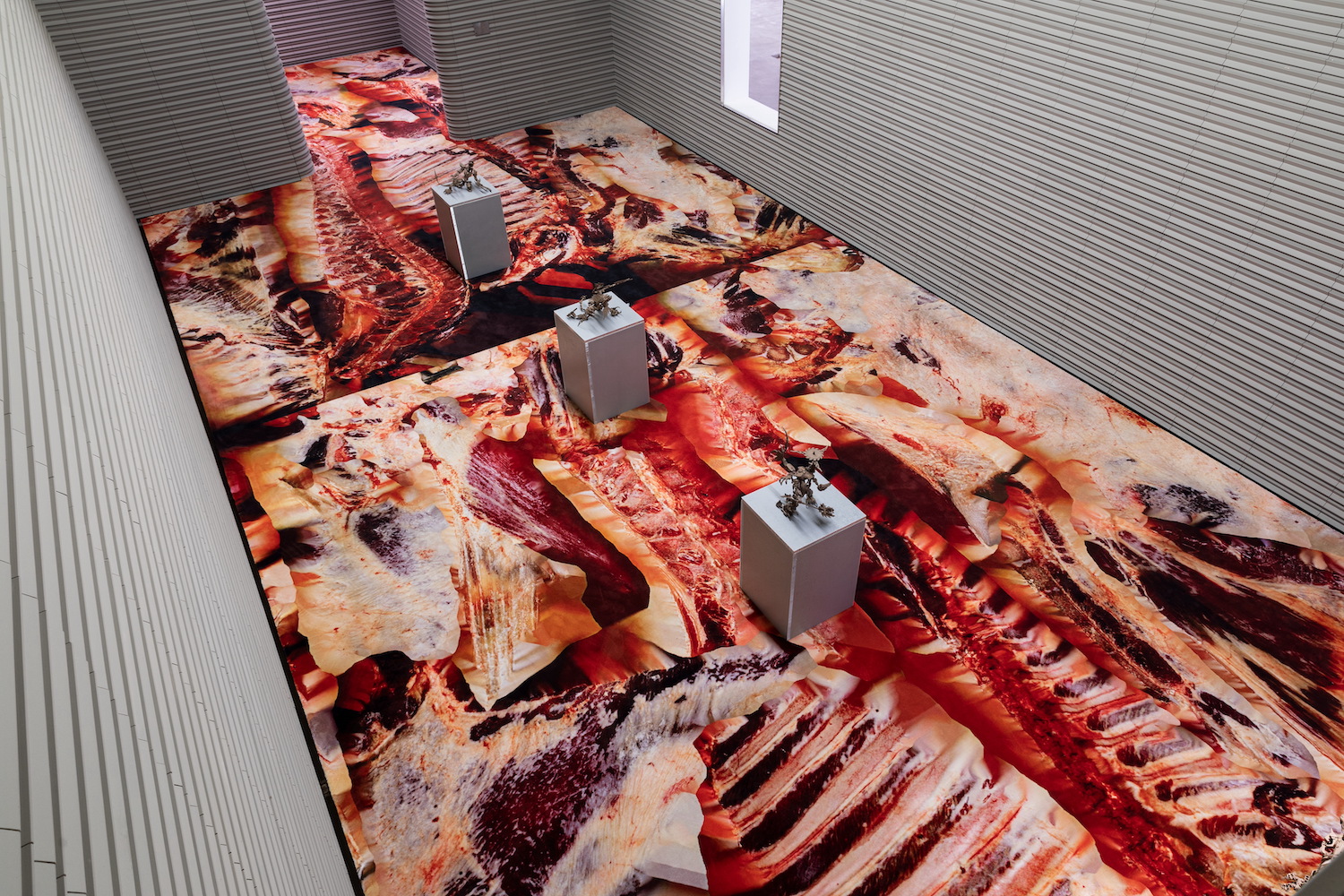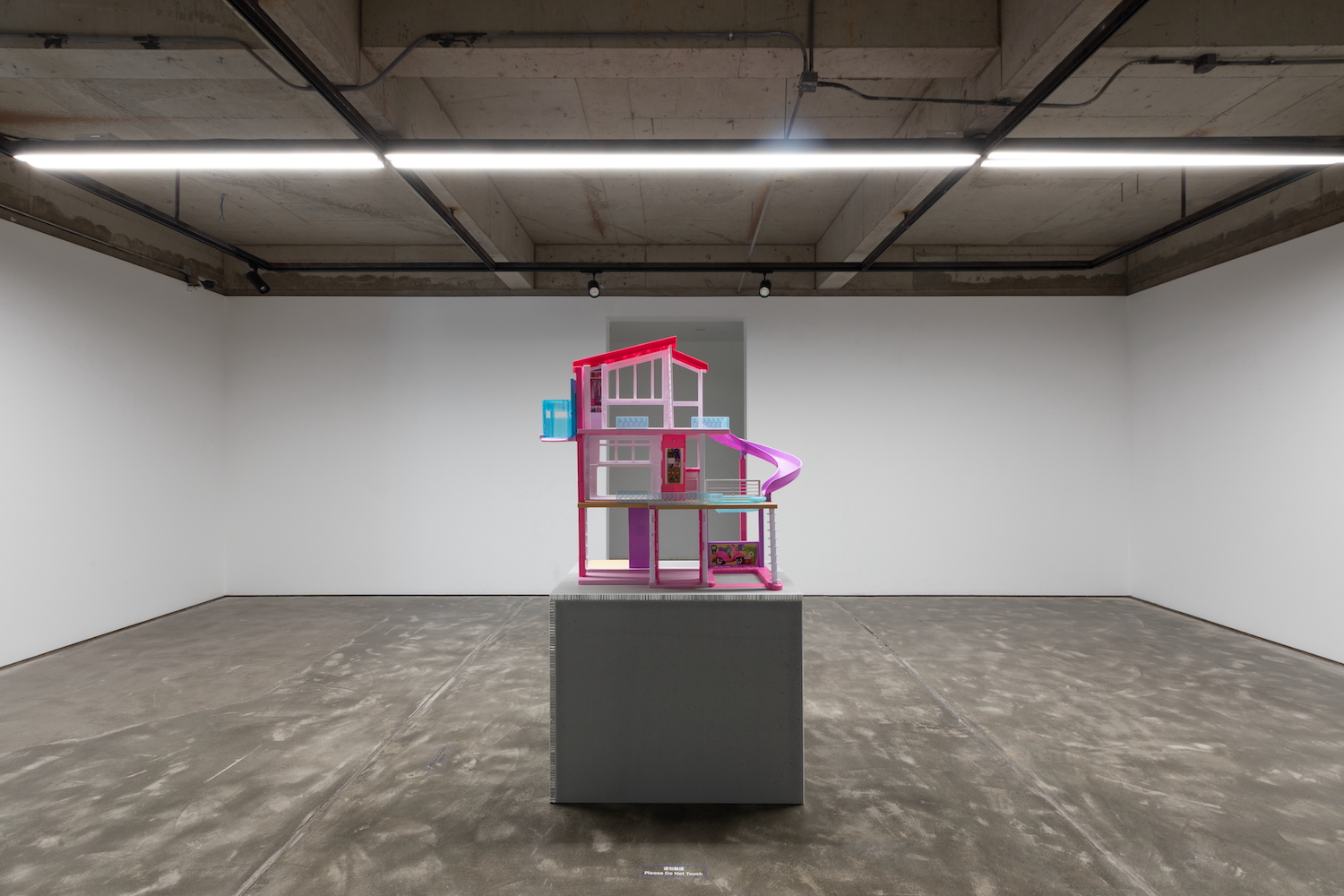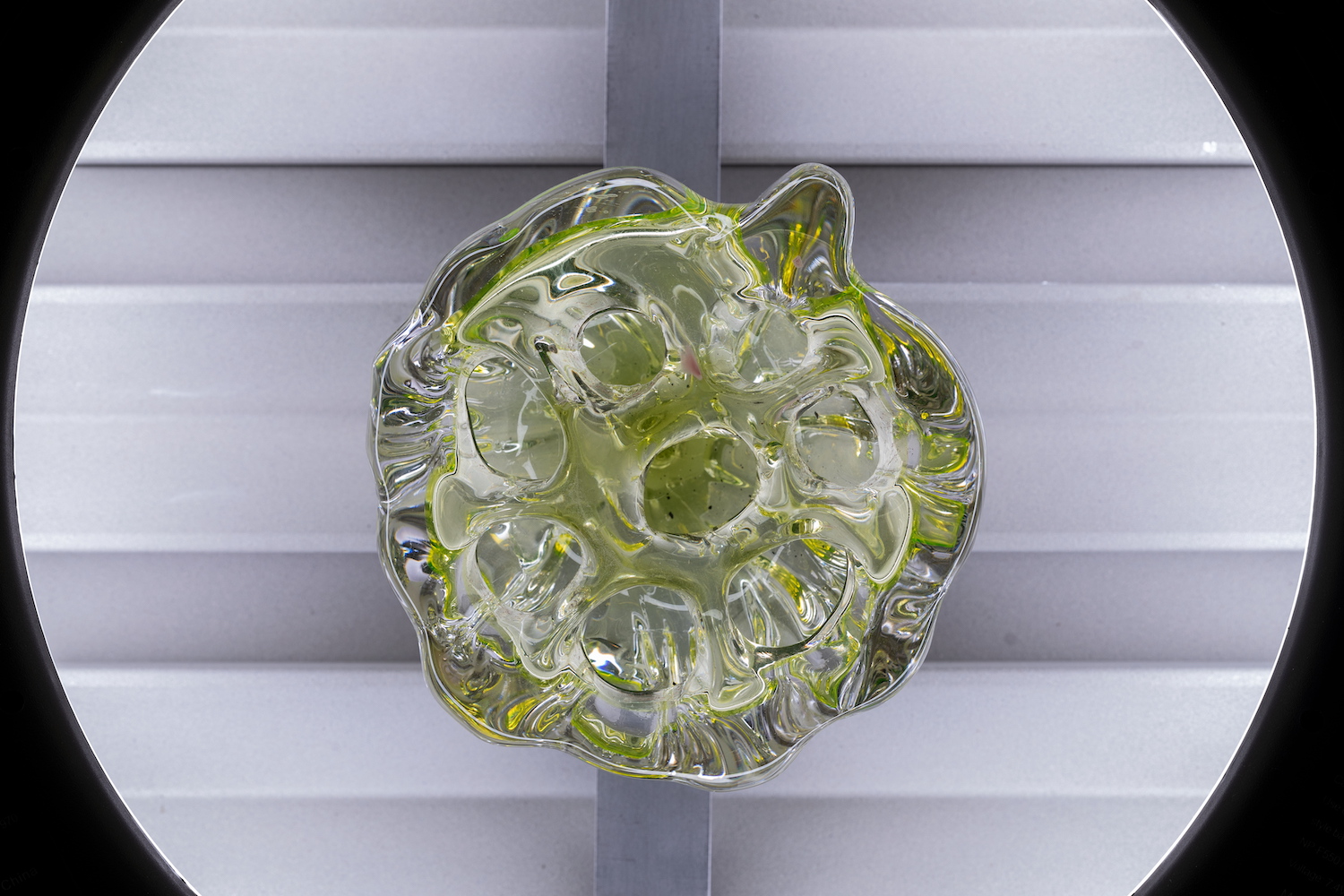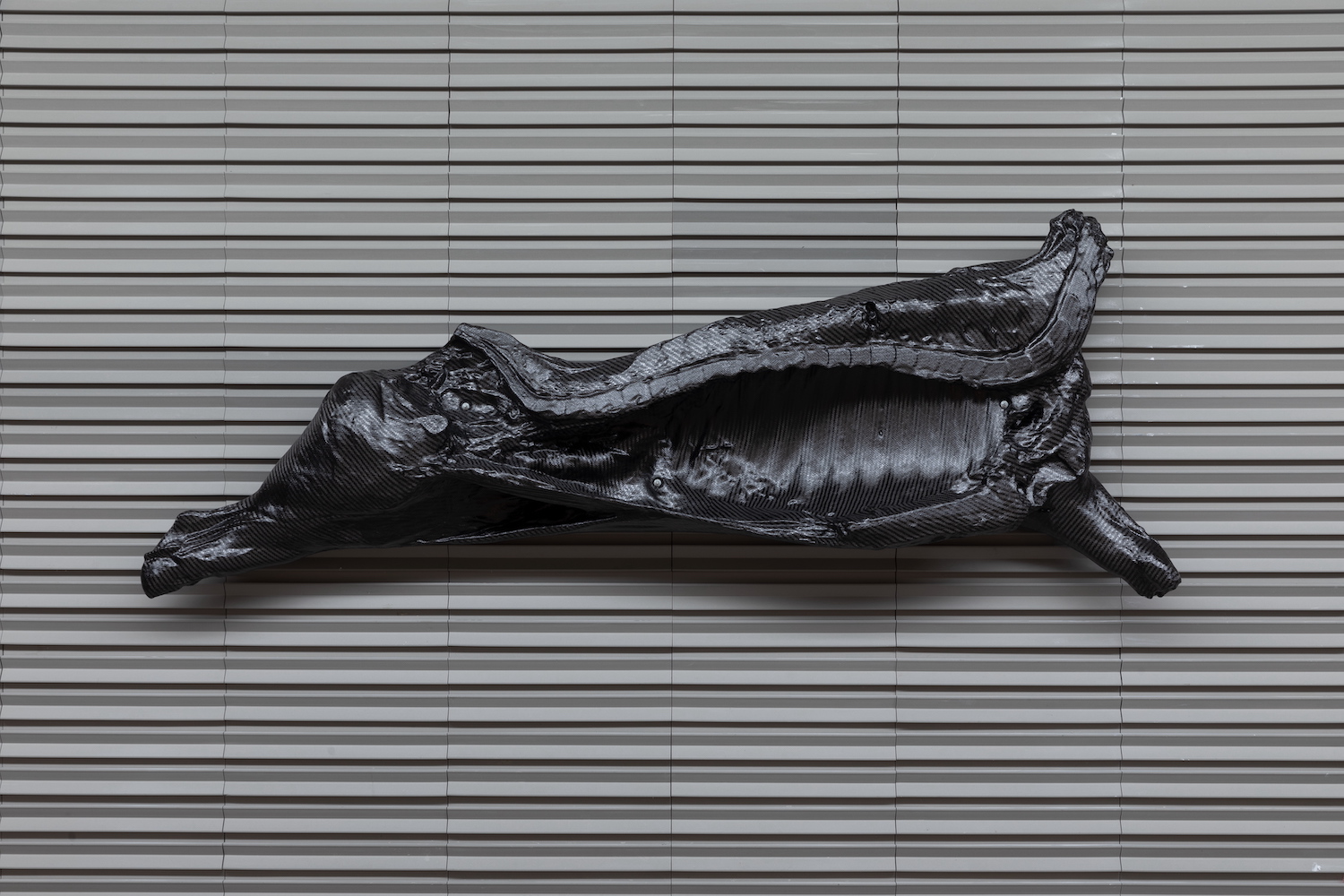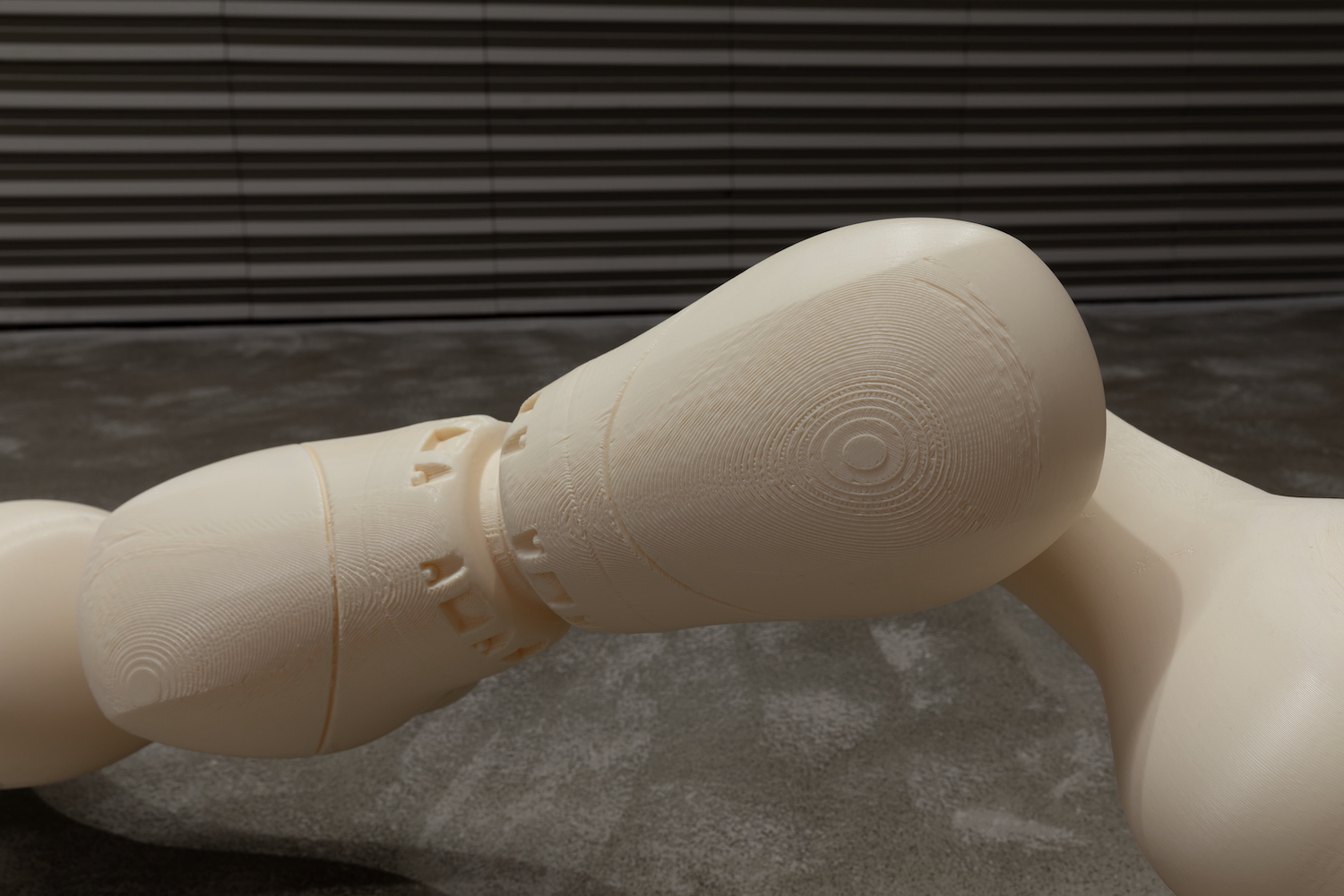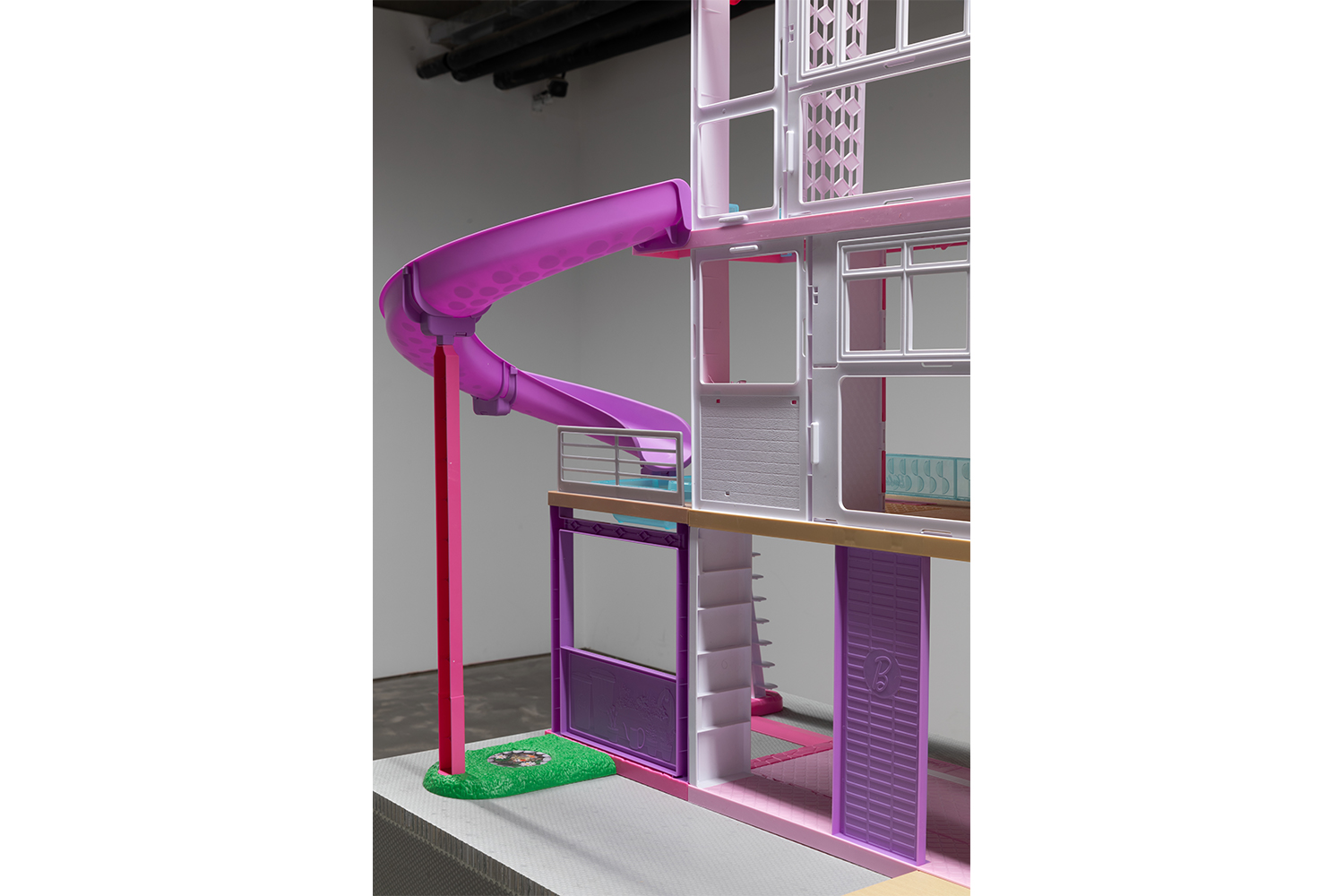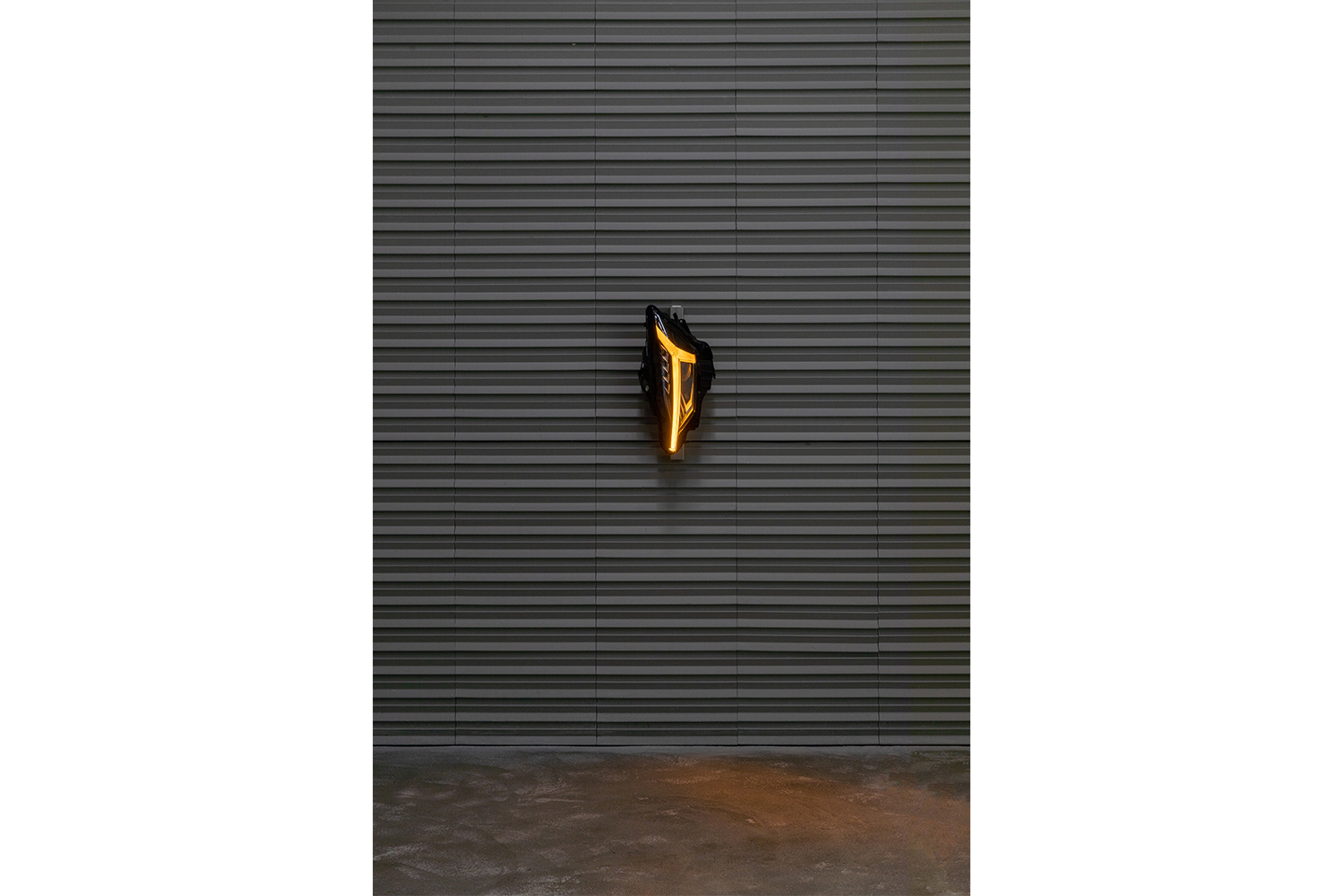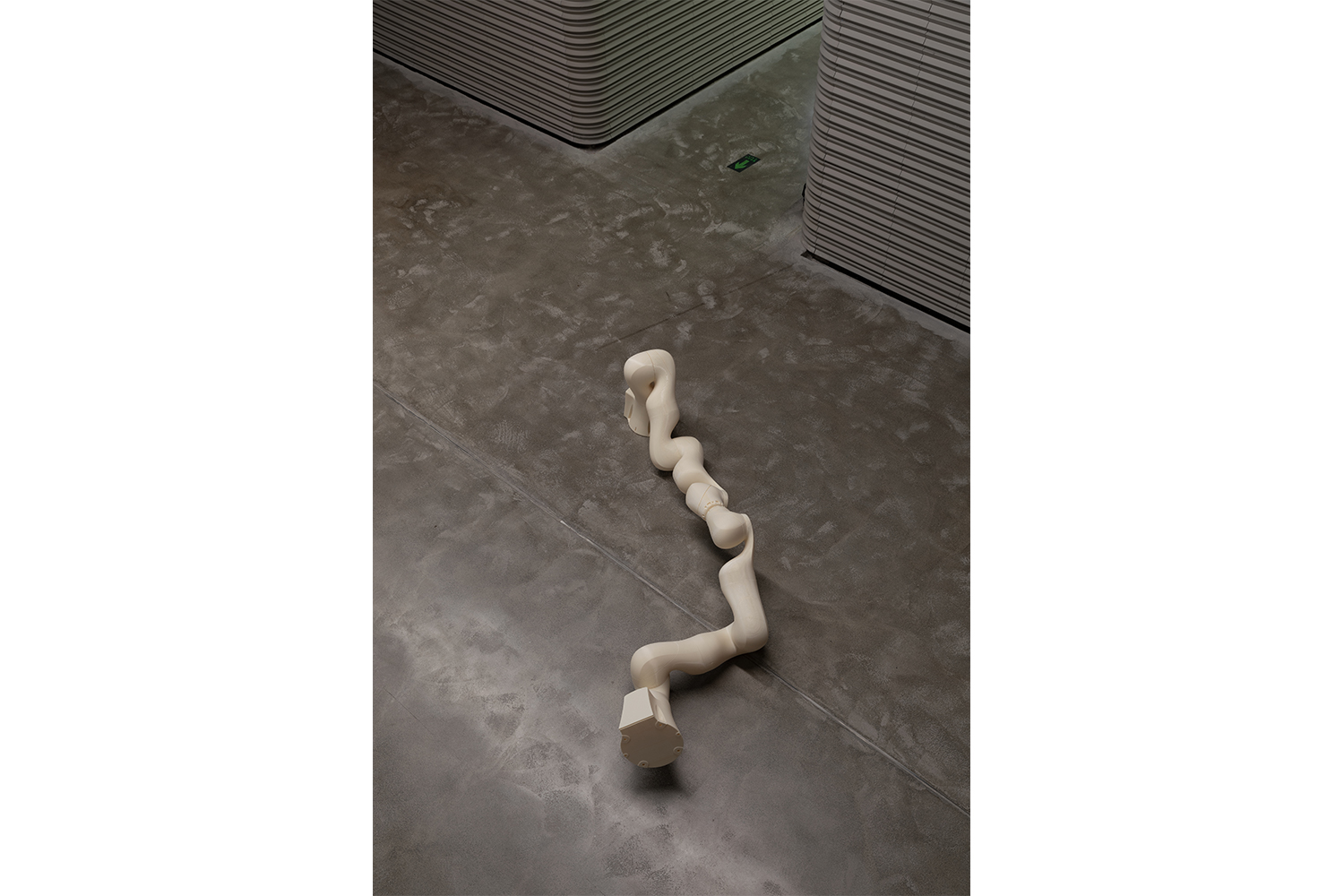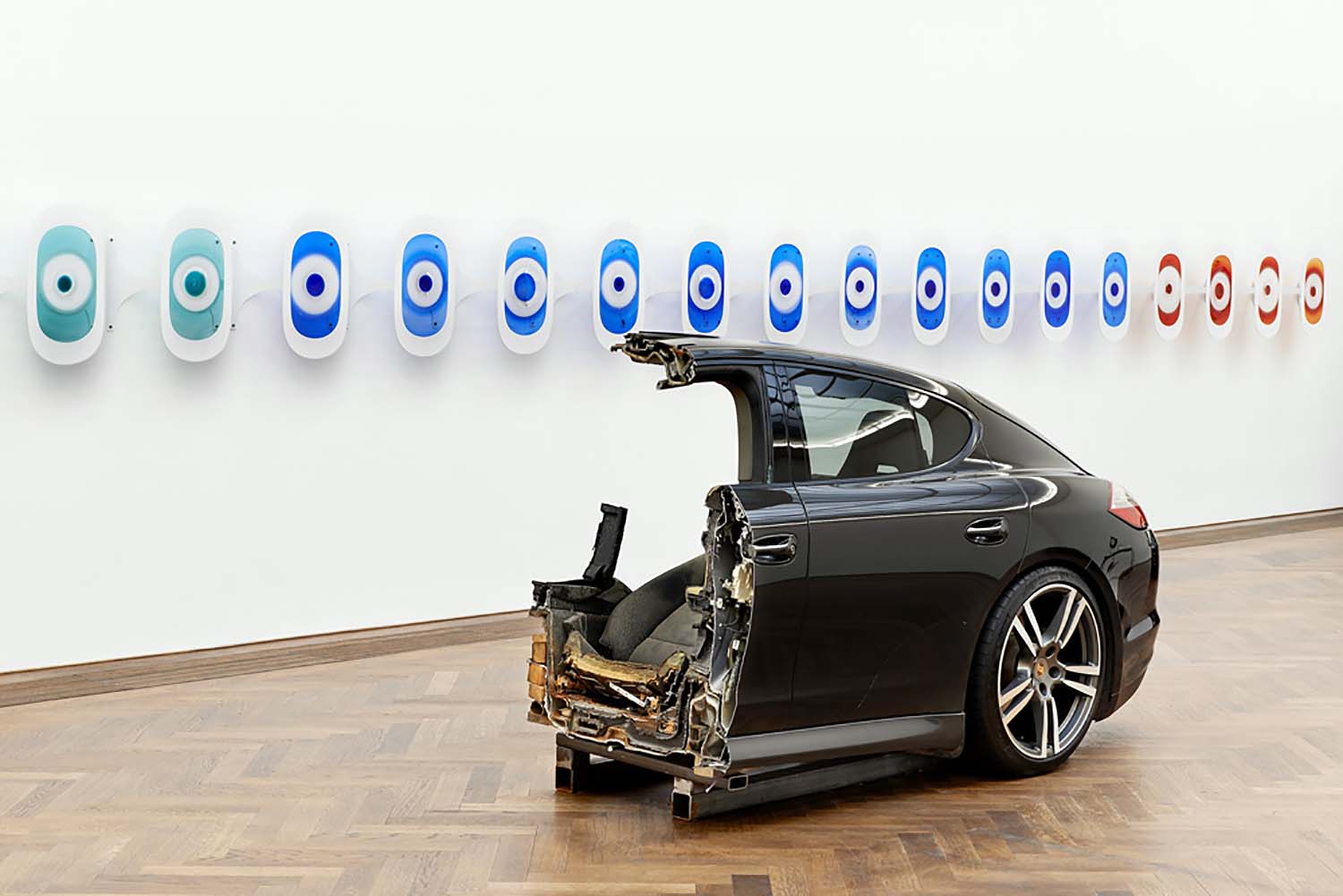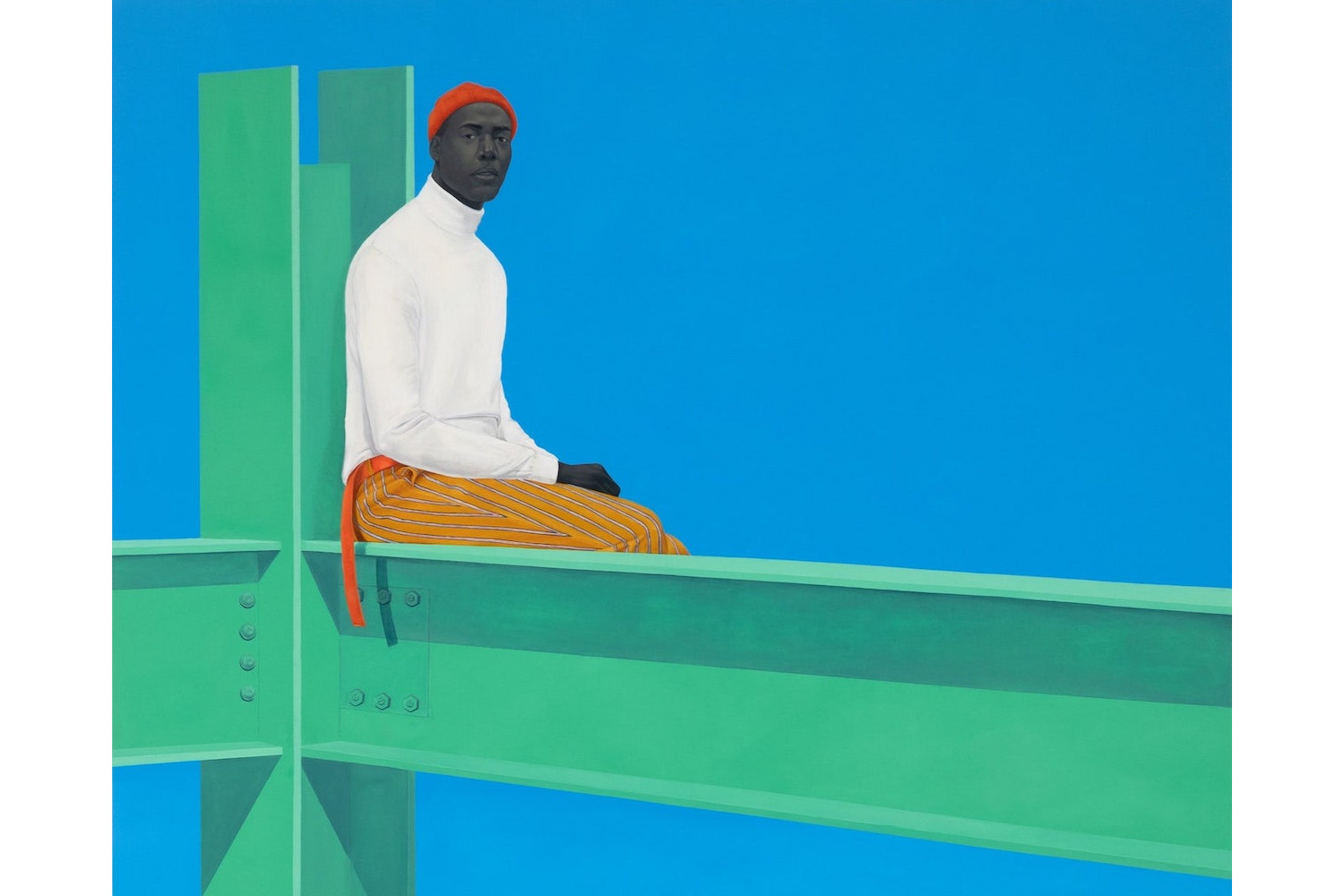“Foreign Object Debris,” Yngve Holen’s first solo show in Asia, brings together more than 30 new works from the artist’s extended practices that are grounded in his decade-long explorations of industrial manufacturing, contemporary food productions, and commercial airliners.
In the aviation industry, Foreign Object Debris (FOD) indicates the objects found in an inappropriate location and could potentially cause damage due to being in that location. Dislocation becomes more disruptive in this sense than other inherent qualities of an object; FOD then turns into a fluid concept—the familiar objects are spontaneously rendered foreign when separated from their designated context and location in the machinery system. In the exhibition ‘Foreign Object Debris’, machinery parts are extracted and revamped into biomimetic debris that starts to reveal their organic or even human-like presence. If not seeing man and machine from a dualistic point of view, Yngve Holen’s works highlight the overlapping realm between the two. Drawing from disassembled industrial parts, works in this exhibition constantly skip between man-machine complex and body-mind paradoxes, and in turn, lay matrices for human and technology symbiosis.
Body as the primary subject to Yngve Holen’s sculptural works, be it absent or present, often looms out through the metamorphosis from organs to industrial parts, poultries to debris, figures to humanoids, and flesh to ornaments. The age of mass digitalization grants us the convenience of quick data access and process, allowing Holen’s metamorphosis—the makings of ghost-in-the-machine, to unfold in multiple different ways. Central to the techniques that Holen adopts are 3D scanning and printing. Outlining a contemporary dilemma of image representations: the two-fold treatment turns the form of an object into collections of data without reservation of its materiality, but instead enables the filling of new matters to the previous cavity—reminiscent of the bulldozing and the subsequent construction of a site: the original structure is removed for the replacement of the new—old minds in new bodies.
Making use of opposite materials ranging from cross-laminated timber and carbon fibre to aluminium honeycomb and Uranium glass, Yngve Holen turns the ground level exhibition space of X Museum into a boundless mix of interior furnishings, readymade objects, and anthropomorphic machinery parts off the production line. Under such arrangements, ‘Foreign Object Debris’ renders a hallucinating landscape where symptoms of repressed desires and attempts of heroic egos converge. Comprised of biomimetic objects: from the flesh patterned carpet, 3D printed cow sculpture, to lotus-shaped blown glass lit by a ring light, ‘Foreign Object Debris’ positions a lens through which we can see how desires of humankind steadily shape and consume industrial designs and productions, or even on the flip side, how technological advancements modify and configure human consumptions.

